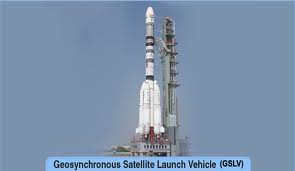Space Technology in India
The history of India’s
interests in space science is as early as 1960s when a Indian National
Committee for Space Research (INCOSPAR) was formed by the Department
of Atomic Energy. Subsequently the Indian Space Research Organization (ISRO)
was set up to develop space technology and its application to various
national tasks.
The development of India’s space technology and programme dates back to 1980 when it successfully launched its own satellite Rohini – 1 from Sriharikota Island. The nation then became the eighth country to prove that it could send a satellite to orbit above Earth.
Vikram Sarabhai and Satish Dhawan are considered as the pioneers behind India’s space exploration programme. Vikram Ambalal Sarabhai was the founder of ISRO and the father of India's space program. He had envisioned for Indian satellites that could provide communications, meteorology, remote sensing, and direct-to-home television broadcasting.
He set up the Thumba Equatorial Rocket Launching Station (TERLS), the first of its kind in India which began manufacturing sounding rockets in India. He drew up plans to transmit education to remote villages across India with the Satellite Instructional Television Experiment (SITE).
Today, space exploration and technology in India has brought great respect for the country. It has fueled the nation to move into the world of high technology, a place previously occupied only by a few developed countries. The development has solved the country’s requirements in the field of remote sensing and communication.
Recently, India has concentrated much of its space development work on complex applications satellites and more powerful rockets. The nation's two primary interests are satellites for remote sensing and communications – used for weather pictures, disaster warnings and feeds to 552 television and 164 radio stations on the ground.
ISRO is successful in establishing two major space systems, INSAT for communication, television broadcastingand meteorological services, and Indian Remote Sensing Satellites (IRS) system for resources monitoring and management. ISRO has developed two satellite launch vehicles, PSLV and GSLV, to place INSAT and IRS satellites in the required orbits.
Chronology of Indian Space History
1963 - First sounding rocket launched from TERLS (November 21, 1963).
1965 -Space Science and Technology Centre (SSTC) established in Thumba.
1967 - Satellite Telecommunication Earth Station set up at Ahmedabad.
1969 - Indian Space Research Organisation (ISRO) formed under Department of Atomic Energy.
1972 - Space Commission and Department of Space set up. ISRO brought under DOS (June 1, 1972).
1975 - ISRO becomes Government Organisation (April 1, 1975). First Indian Satellite, Aryabhata, launched (April 19, 1975).
1979 - Bhaskara-I, an experimental satellite for earth observations, launched (June 7, 1979). First Experimental launch of SLV-3 with Rohini Technology Payload on board (August 10, 1979).Satellite could not be placed in orbit.
1981- First developmental launch of SLV-3.
1984 - Indo-Soviet manned space mission (April 1984).
1987 - First developmental launch of ASLV with SROSS-1 satellite on board (March 24, 1987). Satellite could not be placed in orbit.
2001 - First Launch of the GSLV successfully completed on April 18, 2001.
2002 - ISRO's Polar Satellite Launch Vehicle, PSLV-C4, successfully launched KALPANA-1 satellite from Sriharikota(September 12, 2002). Successful launch of INSAT-3C by Ariane from Kourou French Guyana, (January 24, 2002).
2003 - ISRO's Polar Satellite Launch Vehicle, PSLV-C5, successfully launched RESOURCESAT-1 (IRS-P6) satellite from Sriharikota(October 17, 2003). Successful launch of INSAT-3E by Ariane from Kourou French Guyana, (September 28, 2003). The Second developmental launch of GSLV-D2 with GSAT-2 on board fromSriharikota (May 8, 2003). Successful launch of INSAT-3A by Ariane from Kourou French Guyana, (April 10, 2003).
2004 - The first operational flight of GSLV (GSLV-F01) successfully launched EDUSAT from SDSC SHAR, Sriharikota (September 20, 2004)
2005 - Successful launch of INSAT-4A by Ariane from Kourou French Guyana, (December 22, 2005). ISRO's Polar Satellite Launch Vehicle, PSLV-C6, successfully launched CARTOSAT-1 and HAMSAT satellites from Sriharikota (May 5, 2005).
2006 - Second operational flight of GSLV with Insat-4C. For the first time, an Indian rocket carried acommunication satellite but the mission failed.
2007 - ISRO launches India’s CARTOSAT-2 and Space Capsule Recovery Experiment (SRE-1) and Indonesia’s LAPAN-TUBSAT and Argentina’s PEHUENSAT-1 at one go on January 10, 2007. Successful launch of INSAT-4B by Ariane-5 from Kourou French Guyana, (March 12, 2007). PSLV-C8 successfully launched Italian astronomical satellite AGILE from Sriharikota on April 23. Successful launch of GSLV with INSAT-4CR on board from SDSC SHAR on September 2.
2008 - Launch of Israeli satellite Tecsar by PSLV. Launch of two Indian and eight foreign satellites by a single PSLV. India's first moon mission Chandrayaan-1 by PSLV.
2009 - Launch of Radar Imaging Satellite (Risat-2) and Anusat from Anna University (first satellite from an Indian university) by PSLV. Launch of seven satellites by PSLV, including India's Oceansat.
2010 - Launch of Cartosat-2B, STUDSAT and three small foreign satellites by PSLV.
2011 - Launch of Resourcest-2 and two small satellites by PSLV. Launch of GSAT-12 by PSLV. Launch of Megha Tropiques and three small satellites by PSLV.
2012 - Launch of Risat-1 by PSLV. Launch of French satellite SPOT 6 and Japanese satellite Proiteres.






1 comment:
Casinos in Florida | Top 10 Casinos in FL (2021) - DRMCD
Find the best Florida 인천광역 출장마사지 casinos and casinos. Get details 경상북도 출장마사지 on gambling near you 안동 출장안마 from our map, 양산 출장마사지 and search for best casinos in Florida. 문경 출장마사지
Post a Comment